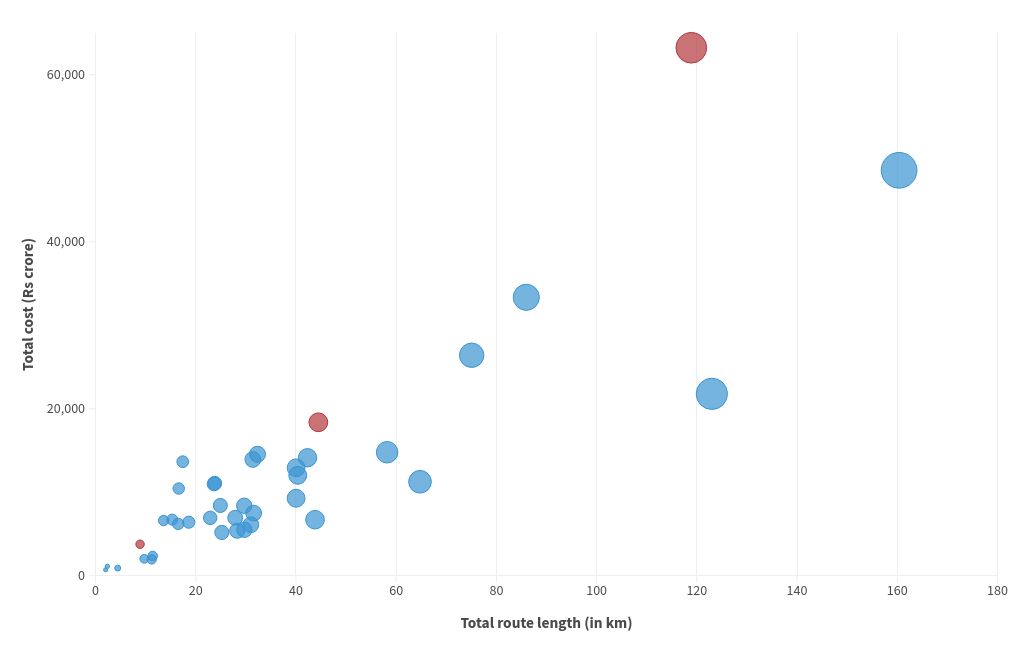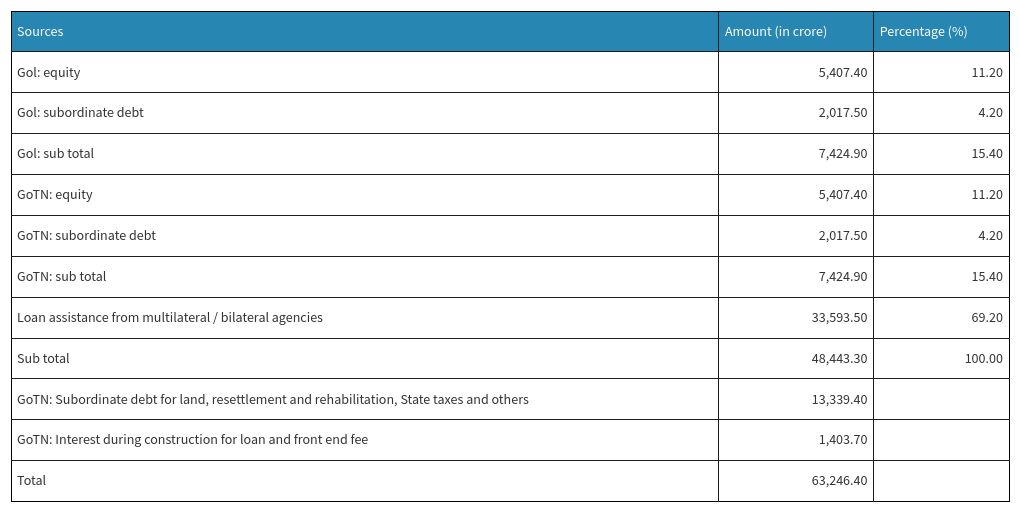Chennai Phase II Metro: Centre’s share not very different from other metro projects
With Chennai bursting at its seams, the Phase II project, while costly, is an urgent need to connect the city’s outskirts with its centre

Chennai Metro Phase II project is the costliest-ever Metro project to be undertaken in India.
| Photo Credit: PICHUMANI K
The Phase-II of the Chennai Metro Rail has once again emerged as a bone of contention between the Centre and Tamil Nadu, with the Centre reiterating it as a “State-sector” project in a recent reply in the Lok Sabha.
In fact, the Public Investment Board (PIB) had recommended it as a ‘central sector project’ in August 2021, just months after the Dravida Munnetra Kazhagam formed the State government. However, the Union Cabinet Committee on Economic Affairs has not approved it till now.
Also read: Will the Centre release its share of funds for Metro Rail work?
While the project is indeed cost-intensive, as the Centre had suggested many times in the past, data shows that the Centre’s share is not a far cry from the funds sanctioned for Metros in other cities such as Bengaluru. Moreover, the project is a necessity as the population in the city’s exteriors which are not connected by Metro is growing rapidly.
No money allotted from Centre for second phase of Chennai Metro
Chart 1 depicts the size and cost of various Metro projects — both completed and under construction. The three Metro projects in Chennai — Phase 1, Phase 1A and Phase 2 — are highlighted.

The chart shows the total route length in km for each project on the horizontal axis.
The cost in rupee crore is depicted along the vertical axis. Chennai Metro’s second phase with a route length of 118.9 km is estimated to cost ₹63,246.4 crore, making it the costliest-ever Metro project undertaken in India.
That being said, a lion’s share of the funding for Chennai Metro phase-II — 70% of the construction cost — is to be sourced as a loan from multilateral/bilateral agencies as shown in Table 2 as per the recommendations of the PIB. The PIB had asked the Centre to pitch in ₹5,407.4 crore as equity (11% of the cost) and ₹2,017.5 crore as a loan (4%) to the project with the State giving similar amounts.

It is this 11% as equity (₹5,407.4 crore) and 4% as subordinate debt (₹2,017.5 crore) that the Centre has refused so far.
Chart 3 shows the Centre’s sanctioned funds (as equity) for various Metro projects across six States.
As things stand today, the Centre has sanctioned ₹7,468 crore as equity for the three phases of the Bengaluru Metro combined, ₹12,550 crore for all phases of the Delhi Metro combined, compared with just ₹3,633 crore as equity for Phase 1 and 1A of the Chennai metro.
Even if the Centre agrees to release the funds recommended by the PIB for Phase-II, its share in Chennai Metro will go up to about ₹9,000 crore, close to ₹1,500 crore more than its share in Bengaluru Metro and still about ₹3,500 crore less than Delhi’s.
Also, this amount does not need to be released by the Centre in one go and can be staggered across various years.
While it is true that Phase II is a costly venture, a look at the population growth in the city’s outskirts shows that Chennai is bursting at its seams.
From monorail to metro rail in Chennai
Map 4 shows the number of electors in various Assembly segments in and around Chennai in the 2011 State and 2024 Lok Sabha polls.
The number of electors in the Assembly segments near the city centre such as Egmore, Chepauk, Thousand Lights and T Nagar have grown at a snail’s pace. In contrast, electors in segments far away from the centre such as Velachery, Sholinganallur, Alandur, Pallavaram, Madhuravoyal and Ambattur, have surged in the period.
Especially, the number of electors in Sholinganallur — one of the major areas not connected by Metro currently and will be in phase II — has skyrocketed from 3.5 lakh in 2011 to 6.6 lakh in 2024.
Source: Ministry of Housing and Urban Affairs, metro websites and the Election Commission
Read Comments
- Copy link
- Telegram
READ LATER
Remove
SEE ALL
PRINT
Related stories
 Chennai Metro Rail’s first driverless train delayed, likely to arrive next month
Chennai Metro Rail’s first driverless train delayed, likely to arrive next month Non-allocation of funds to Tamil Nadu: Durai Vaiko Criticises central government
Non-allocation of funds to Tamil Nadu: Durai Vaiko Criticises central government Union government deceived Tamil Nadu by not allocating funds, says Vaiko
Union government deceived Tamil Nadu by not allocating funds, says Vaiko Centre clears Chennai Metro Rail’s proposal to buy additional trains for phase I project
Centre clears Chennai Metro Rail’s proposal to buy additional trains for phase I project

